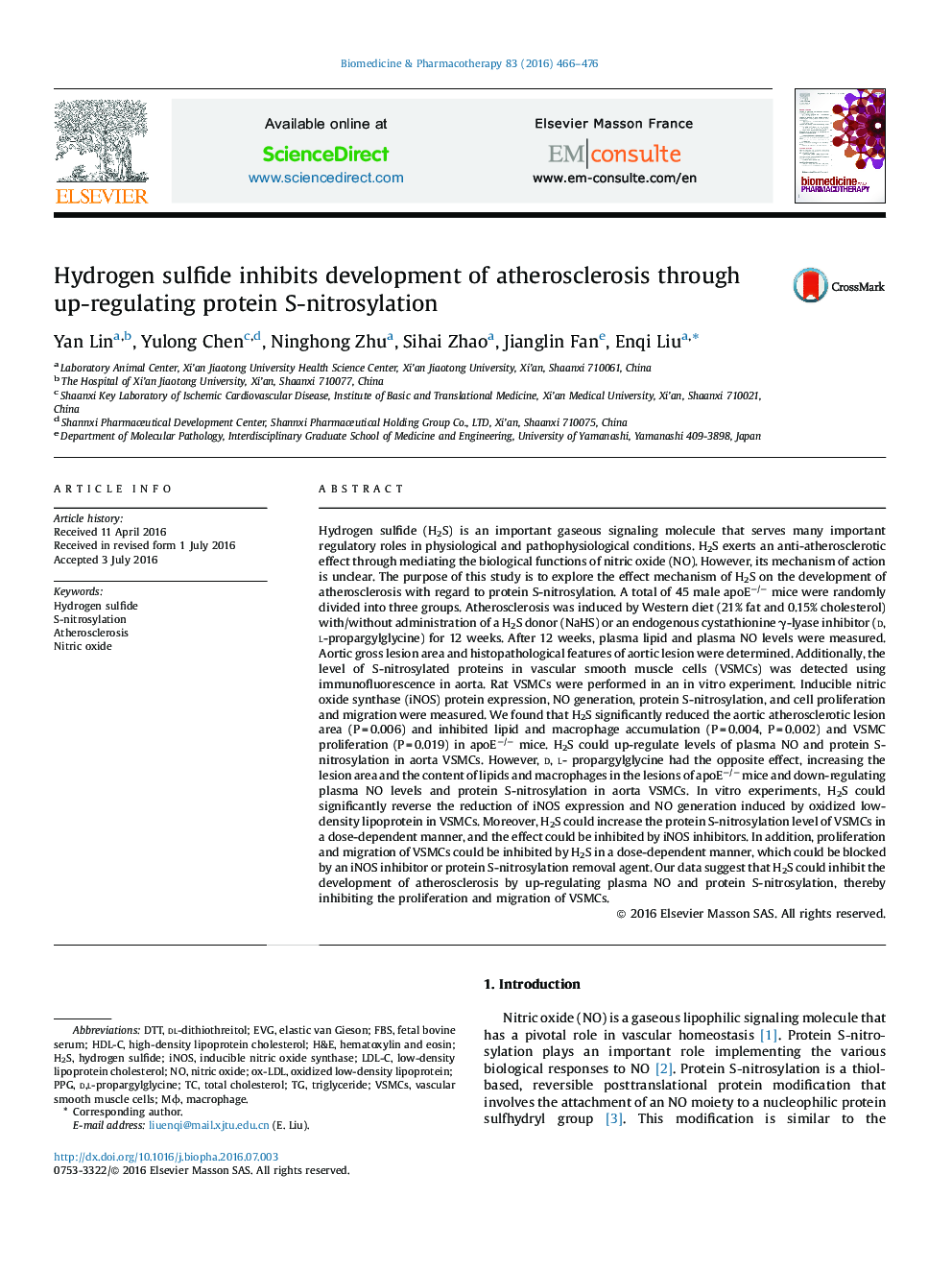| کد مقاله | کد نشریه | سال انتشار | مقاله انگلیسی | نسخه تمام متن |
|---|---|---|---|---|
| 2524689 | 1557959 | 2016 | 11 صفحه PDF | دانلود رایگان |

Hydrogen sulfide (H2S) is an important gaseous signaling molecule that serves many important regulatory roles in physiological and pathophysiological conditions. H2S exerts an anti-atherosclerotic effect through mediating the biological functions of nitric oxide (NO). However, its mechanism of action is unclear. The purpose of this study is to explore the effect mechanism of H2S on the development of atherosclerosis with regard to protein S-nitrosylation. A total of 45 male apoE−/− mice were randomly divided into three groups. Atherosclerosis was induced by Western diet (21% fat and 0.15% cholesterol) with/without administration of a H2S donor (NaHS) or an endogenous cystathionine γ-lyase inhibitor (d, l-propargylglycine) for 12 weeks. After 12 weeks, plasma lipid and plasma NO levels were measured. Aortic gross lesion area and histopathological features of aortic lesion were determined. Additionally, the level of S-nitrosylated proteins in vascular smooth muscle cells (VSMCs) was detected using immunofluorescence in aorta. Rat VSMCs were performed in an in vitro experiment. Inducible nitric oxide synthase (iNOS) protein expression, NO generation, protein S-nitrosylation, and cell proliferation and migration were measured. We found that H2S significantly reduced the aortic atherosclerotic lesion area (P = 0.006) and inhibited lipid and macrophage accumulation (P = 0.004, P = 0.002) and VSMC proliferation (P = 0.019) in apoE−/− mice. H2S could up-regulate levels of plasma NO and protein S-nitrosylation in aorta VSMCs. However, d, l- propargylglycine had the opposite effect, increasing the lesion area and the content of lipids and macrophages in the lesions of apoE−/− mice and down-regulating plasma NO levels and protein S-nitrosylation in aorta VSMCs. In vitro experiments, H2S could significantly reverse the reduction of iNOS expression and NO generation induced by oxidized low-density lipoprotein in VSMCs. Moreover, H2S could increase the protein S-nitrosylation level of VSMCs in a dose-dependent manner, and the effect could be inhibited by iNOS inhibitors. In addition, proliferation and migration of VSMCs could be inhibited by H2S in a dose-dependent manner, which could be blocked by an iNOS inhibitor or protein S-nitrosylation removal agent. Our data suggest that H2S could inhibit the development of atherosclerosis by up-regulating plasma NO and protein S-nitrosylation, thereby inhibiting the proliferation and migration of VSMCs.
Journal: Biomedicine & Pharmacotherapy - Volume 83, October 2016, Pages 466–476